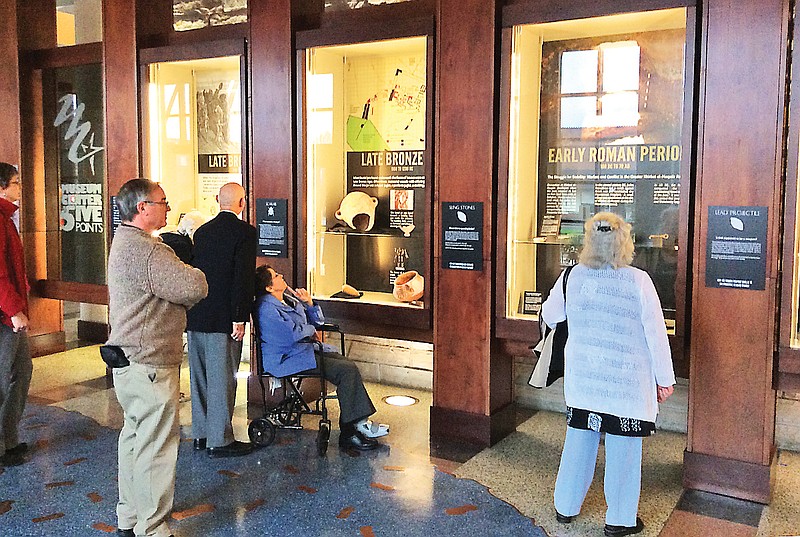CLEVELAND, Tenn. -- More than 40 artifacts have journeyed from the Holy Land's ancient past to the Museum Center at Five Points as part of an exhibit called "Khirbet el-Maqatir: History of a Biblical Site."
The exhibit offers a glimpse of everyday life during multiple eras in a biblical-era settlement located about nine miles from Jerusalem in the West Bank, and provides a taste of ongoing archaeological research into the worlds now hidden beneath a patch of low ruins.
It is a "phenomenal" opportunity to have these ancient artifacts visit Cleveland, said Hassan Najjar, executive director of the museum, because such archaeological finds rarely leave their homeland.
If you go
* What: "Khirbet el-Maqatir: History of a Biblical Site" * Where: Museum Center at Five Points, 200 E. Inman St., Cleveland, Tenn. * When: Through Dec. 26 * Tickets and info: Call 423-339-5745, or visit www.museumcenter.org
Oil lamps, coins, an infant burial jar and many other items provide snapshots of the site's life as a small Bronze Age fortress; a village that was abandoned during Jewish revolt against the Roman Empire in the 1st century A.D. and -- a few centuries later -- a Christian monastery.
The artifacts have been loaned by the Civil Administration for Judea and Samaria for exhibition in the United States, said Najjar. It took about a year of effort and a few sleepless nights to secure the exhibit, he said.
Lee University's Dr. Brian Peterson, field archaeologist at Khirbet el-Maqatir, recently discussed the significance of the objects with museum members.
Peterson said efforts are under way to prove that the site is the true location of Ai, a city destroyed by fire during the Israelite conquest of Canaan, as mentioned in the biblical Book of Joshua.
The 2013 discovery of a 3,500-year-old scarab -- a beetle-themed Egyptian amulet, seal or similar device -- is an essential piece of evidence supporting theories associating Khirbet el-Maqatir with Ai, said Peterson.
Scarabs are not uncommon, but the item bore the griffin symbol of Amenhotep II, who ruled in the 15th century B.C., which corresponds to the time frame for Ai's destruction, he said.
"Scarabs don't lie," said Peterson.
While nearby el-Tell has long been presumed to be the site of ancient Ai, the biblical account of the city's size and topography align more closely with Khirbet el-Maqatir, he said.
Lee University students who took part in on-site research efforts expressed awe and wonder at their experiences.
"I've always wanted to be [in Israel] since I was little and I realized there was this place that biblical events actually happened," said Ruther Vanderford, an anthropology student. "Being on a dig and finding these things that haven't been seen by anyone else in the last 1,000 or 2,000 years was so amazing."
Paul Leach is based in Cleveland. Email him at paul.leach.press@gmail.com.
